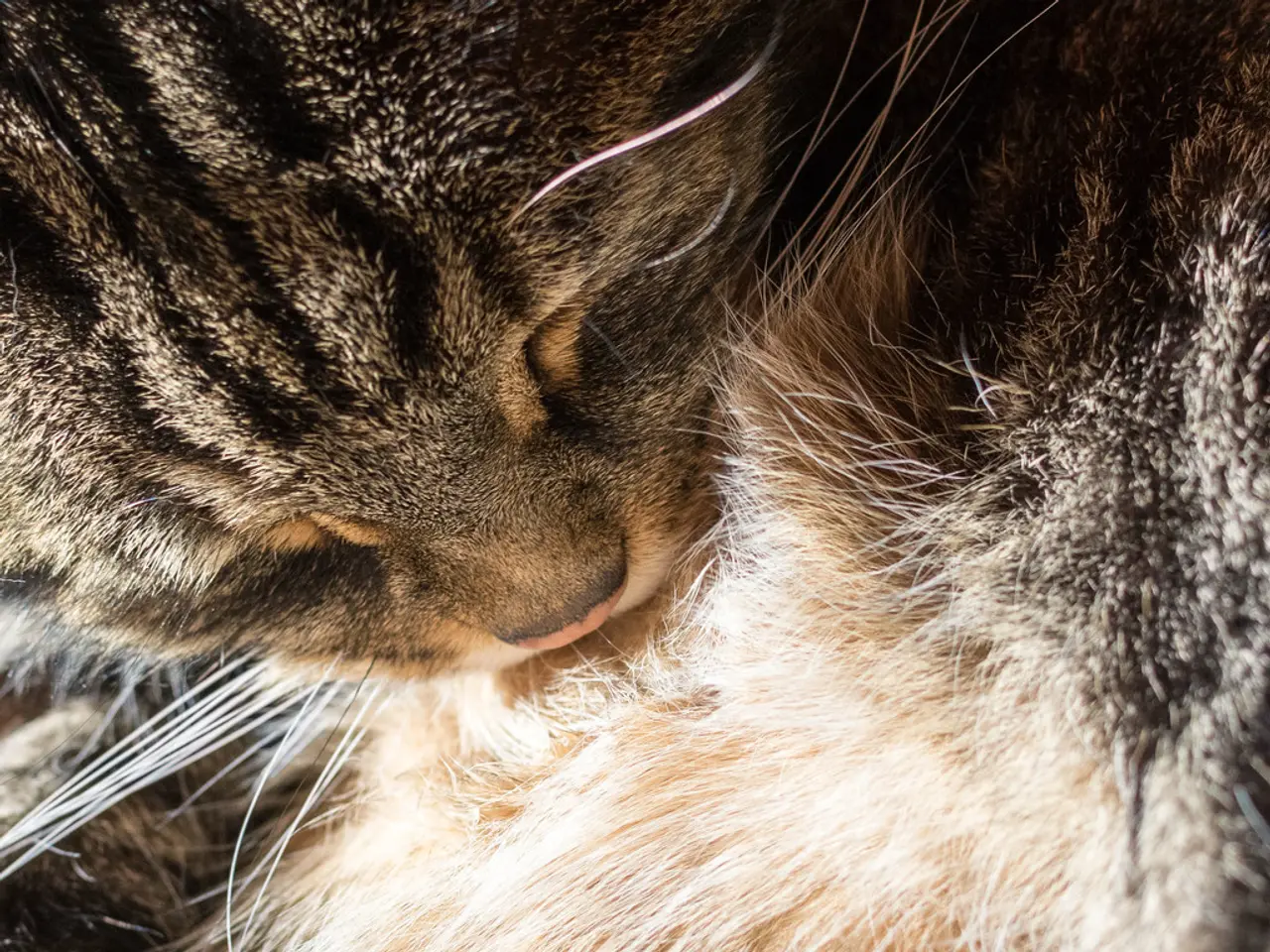Cats' Dental Disease: Common, Silent, and Crucial to Spot Early
Pet owners, be aware: dental disease is a common and often overlooked issue in cats. It's crucial to spot the signs early, as it can progress rapidly and silently. Let's delve into this feline health concern and understand how to keep our furry friends' smiles healthy.
Dental disease in cats typically starts with gingivitis, the only reversible stage. It's marked by bad breath, drooling, and red gums. If left untreated, it progresses to periodontitis and tooth resorption, causing pain and difficulty eating. These conditions are caused by bacteria in plaque, which hardens into tartar, harbouring more bacteria and allowing new plaque to form.
Sadly, many cat owners miss these signs until the problem is severe. Cats rarely get cavities, but they can develop gingivitis, periodontitis, and resorptive lesions. In fact, around 70% of adult cats show signs of periodontal disease by the age of two. Regular check-ups and good oral hygiene, such as daily brushing with a toothbrush or dental wipes, can prevent these issues.
Diagnosis involves a thorough examination under general anaesthesia. Treatment may include cleaning, polishing, and even surgery to extract diseased teeth, costing between $1,000 to $2,000.
Dental disease is a significant issue among cats, with more than half of all pets over three affected. Regular check-ups and good oral hygiene can prevent these problems. If you notice signs like bad breath, drooling, or difficulty eating, consult your vet promptly. Early intervention can save your cat from pain and prevent costly treatments.




